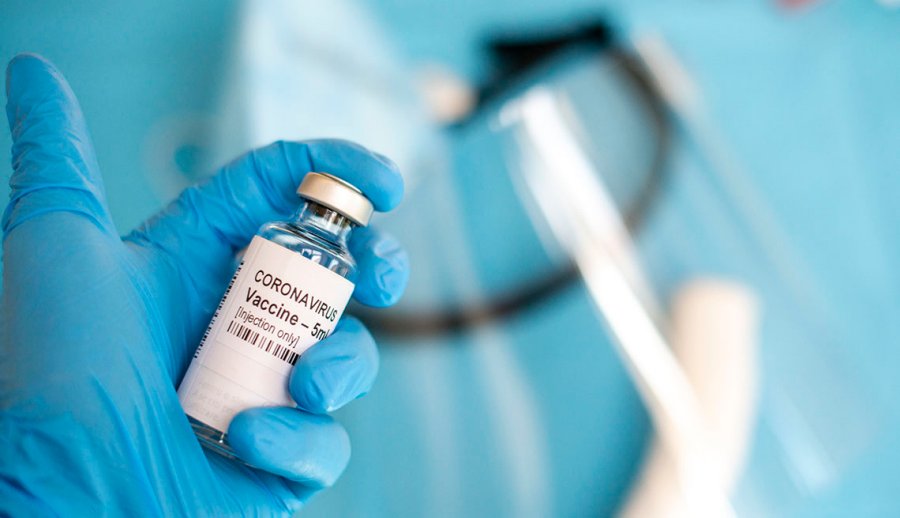THE PROCESS OF GETTING THE COVID-19 VACCINE AND THE STEPS INVOLVED
Already not exactly a stress-free group, college students in Multnomah County continue along an education path long revered for its social aspect entirely digitally instead – the result of a pandemic unparalleled in this century, and within an online infrastructure essentially nonexistent barely more than a year ago.

With well over half a million COVID casualties in the United States to date, it is safe to say a great number of MHCC students have now lived through the trauma of a family member dying of a relentless disease, as well.
However, the nationwide vaccine development process, highly documented and anticipated, has reached its peak in the Portland metro area in terms of its availability: As of April 19, all residents age 16 and above can make an appointment for a shot. And college students must be among them, should we expect to see meaningful progress against the virus anytime soon.
While, yes, young adults (the primary age group of collegians) are comparatively at low risk of serious COVID complications, it is nevertheless in our collective best interest to seek immunization if we ever hope to return to a state of ‘normalcy,’ when the greatest curricular stress in our lives might simply be a disagreeable instructor.
As a publication having always been “the student voice of MHCC,” now is the time to wield a voice of collective experience toward those yet to receive their critical COVID vaccine dosage, several among us now being recipients ourselves.
It is also very much the time to take a clear, assertive position in the present debate regarding COVID-19 immunization.
The vaccination rollout did not initially include the traditional college student age range, 18 to 22. Students diagnosed with high risk for severe illness from COVID-19 had early access to the vaccine, while others expressed a fear of supply becoming too limited before they were able to receive theirs, a concern shared by Advocate contributors.
As the eligibility tiers opened to larger groups, such as food service workers and other frontline employees, labor categories our Advocate staff spill into, it created an ethical debate of whether or not Oregon was prioritizing our economy over the health of our communities. For instance, Oregon was one of the last states to begin vaccinating its seniors, in February.
We at The Advocate also shared a fair bit of curiosity and concern regarding the abundant conflicting information regarding the vaccine, how it actually operates within the body, and its purported harm.
What to expect
Regardless, a highly systematic process awaits new vaccine recipients within the Oregon Convention Center (or the drive-through site near the Portland airport, for those with mobility issues). Designed for maximum efficiency and minimal risk of exposure, long but quickly-moving lines guide adults from all walks of life toward numerous different specialists ready to begin administering the shots. It’s relatively a rather fast affair, taking less than an hour.
The Pfizer and Moderna vaccines require a 15-minute monitoring period directly after one receives a dose, and a three- or four-week waiting period before the second dose (much different from the single-shot Johnson & Johnson, reapproved on April 23 for use in the U.S. after investigation of very rare, but serious complications.) Varying levels of fatigue for a few days, up to the feeling of “being hit by a truck” were among the symptoms commonly experienced by our staff before subsiding.
Mistrust, misinformation Meantime, we have come to accept, to a degree, the abundance of misinformation during an era in which it is especially easy to transmit – though, arguably, we really shouldn’t.
Vaccination is surely a step requiring a certain level of trust between the patient and the medical practitioner, and the spread of unjustified mistrust of immunization has made the pathway out of this global crisis more problematic. It’s a terrible reality given that in relatively so little time innumerable lives have been destroyed by a now far-more combatable catastrophe.
No one guilty of fear-mongering fabrication or its dissemination will ever admit responsibility of doing so, and it is clear that merely attempting to counter false claims with correct ones is a futile effort when trying to reach groups living in a digital isolation. The deplatforming of non-debatably false, expert/researcher-rebutted ‘information’ is an all-too-necessary component of any successful fight, here. Hundred of thousands of lives, in America alone, are the consequences of not having already done so.
It is quite natural to be skeptical of new and grand technological developments, but it is irresponsible to willingly remain ignorant of their function and purpose. Disagreement toward anything and everything is inevitable, but it is selfish to deny others their safety chiefly in the interest of one’s own stubborness.
The immunized Advocate staff, our publication dedicated to the student body in particular, value the well-being of others just as much as our own, the very reason why seeking and receiving the COVID vaccine is something we consider a must for those who are able.

Excellent editorial and hopefully all students at MHCC will take the vaccine. There is no downside and it will save lives!